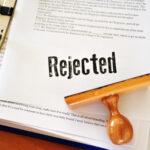In some technology classes, subject matter eligibility rejections are par for the course, but in others, they can come as more of a surprise. Take, for example, the field of printing/measuring and testing. Whereas attorneys drafting applications in fields such as these may expect to spend the majority of their prosecution time fine-tuning technology-specific claims around prior art rejections, the continued prevalence of Alice and the increasing use of computer-implemented components across mechanical fields means that the ability to craft a convincing argument on subject matter eligibility can be critical here as well. We took a look at three examples of winning responses to office action examples from Art Unit 2862 to find out how their arguments were able to stand up to the test.
Additional Steps and Elements: Prong Two of the Alice Test
As is well known, Alice, the Supreme Court set forth a two-pronged test for patent-eligibility. First, a determination is made as to whether the claim is directed to a law of nature, a natural phenomenon, or an abstract idea (collectively, called the “judicial exceptions”). If the answer is yes, then the second step is to further determine whether any element or combination of elements, in the claim is sufficient to ensure that the claim amounts to something significantly more than a judicial exception.
Whereas the Alice test would seem to present an either/or situation, it is nearly always to the prosecutor’s benefit to cover all bases by presenting arguments on both prongs and leave it to the examiner to determine which they find convincing.
An example of arguments directed to the Alice test in the printing/measuring and the testing domain is in an Office Action response dated October 28, 2019, from application 15/448,587 for an “Apparatus and Method of Processing Multi-Component Induction Data.”
First, the applicant argued that claim 1 was not an abstract idea. Specifically, it was argued that the claim recited, “acquiring signals based on the multicomponent tool having a plurality of receiver arrays,” which is not abstract. Furthermore, claim 1 was not directed to a mathematical concept and did not recite any mathematical relationships, formulas, or calculations. Therefore, the applicant argued, the contention that claim 1 was directed to an abstract idea of mathematical concepts was an overgeneralization and ignored the clear claim language and presence of non-abstract ideas.
Second, the applicant argued that even if claim 1 had failed under step one of Alice, the claim would meet step two. In the applicant’s case, the recited exception was integrated into a practical application of the exception. The claim recited the additional element of generating data with “improved resolution at multiple depths of investigation compared to the acquired signals” and practically applied the alleged abstract idea to improving the acquired signal of the multi-component induction logging tool. Accordingly, the applicant argued, the claimed combination was an inventive concept for generating improved data with an improved resolution at multiple depths of investigation compared to the acquired signals, and therefore claim 1 recited significantly more than the alleged abstract idea.
Examiner Brent Alan Fairbanks’s response to these arguments focused on those relating to the second step of Alice. In an office action dated December 4, 2019, the Examiner withdrew the Alice rejection, stating:
The additional element of a receiver triad, the additional step of “correlates the electromagnetic properties of the downhole formation”, and the additional step of “the data has an improved resolution at multiple depths of investigation compared to the acquired signals” integrates the abstract idea into a practical application that reflects an improvement to another technology or technical field. Therefore, the claim is eligible at Prong Two of the revised step 2A (see 2019 Revised Patent Subject Matter Eligibility Guidance – Revised Step 2A). The rejection of 29 July 2019 has been withdrawn.
A notice of allowance was sent on March 6, 2020, and the resulting patent issued as U.S. Patent No. 10,670,767 on June 2, 2020.
Kudos to Neilesh R. Patel from Gilliam IP PLLC for exemplary work in drafting winning office action responses!

Software-Related Claims are not Automatically Judicial Exceptions Under Enfish
Before Enfish, courts had generally found that software-related inventions, requiring the computer, represented abstract ideas. Because of this, when the Alice test was applied to any software-related claims, the analysis generally assumed that step one was met and moved on to step two. However, in Enfish, the court found that the software claims at issue were not directed to an abstract idea. Accordingly, the patent-eligibility analysis did not need to proceed beyond step one.
A case involving a printing/measuring and testing invention in which Enfish was successfully argued against an Alice rejection is in an office action response dated June 3, 2019, from application 15/649,571 for a “Methods for Improved Heading Estimation.”
The applicant quoted Enfish to assert that step one of Alice asks whether the focus of the claims is on the specific asserted improvement in computer capabilities or is an abstract idea invoking computers merely as tools:
“[T]he first step in the Alice inquiry … asks whether the focus of the claims is on the specific asserted improvement in computer capabilities … or, instead, on a process that qualifies as an ‘abstract idea’ for which computers are invoked merely as a tool.” Enfish, LLC v. Microsoft Corp., 822 F.3d 1327, 1335-36 (Fed. Cir. 2016).
Applicant went on to argue that in their case, the claims could not be simplified into mere mental steps. The claims provided a practical application for determining a global rotation estimate, applying spatial magnetic filtering, and generating accurate path data based on magnetic and gyro sensor data collected at a computing device. When considered as a whole, the applicant argued that the claims recited significantly more than mental processes or instructions performed on generic computer components that are well-understood, routine, and conventional.
In a notice of allowance dated June 12, 2019, examiner John H. Le explained how the applicant had overcome the Alice rejection:
Claims 15-30 are allowable over the rejection under 35 U.S.C. 101 because the claim does not recite any [sic] the judicial exceptions enumerated in the 2019 PEG. For instance, the claim does not recite any mathematical relationships, formulas, or calculations. Further, the claim does not recite a mental process because the steps are not practically performed in the human mind. Finally, the claim does not recite any method of organizing human activity such as fundamental economic concepts or managing interactions between people. Thus, the claim is eligible because it does not recite a judicial exception.

The resulting patent was issued as U.S. Patent No. 10,393,543 on August 27, 2019.
Kudos to Timothy D. Casey from Baker & Hostetler LLP for exemplary work in drafting winning office action responses!
No Monopolization of an Abstract Idea
An example focusing on step two of Alice did not emphasize whether the claims included a judicial exception but instead focused on whether the claims attempted to monopolize the judicial exception for all uses.
In application 15/438,259 for “Expected Sensor Measurement Receipt Interval Estimation,” the applicant presented arguments in response to an Alice rejection in an office action response dated March 23, 2020. The applicant contended that, when making the determination of whether a claim is directed to an abstract idea, the examiners should keep in mind that some inventions pertaining to improvements in other technologies are not abstract when appropriately claimed. The applicant argued that the claims at issue provided a particular improvement to the technology of sensor systems by automatically performing the remedial action of restarting or rebooting the system.
In a notice of allowance dated July 10, 2020, examiner Leonard S Liang referenced the fact that the claims were not monopolizing an abstract idea as dispositive:
However, when considering the claims as a whole, the examiner determined that there was enough in the additional elements to be indicative of integration into a practical application. Here the claim is not monopolizing the abstract math for all purposes, just those relating to rebooting/restarting the sensor system. And the sensor system can still be rebooted/restarted even if another mathematical technique is used. Therefore, the claims are not directed to a judicial exception. They qualify as eligible subject matter under 35 U.S.C. 101.
Although the case was allowed, it was abandoned before issuing as a patent for failure to pay the issue fee.
Kudos to John C. Garza from Trop, Pruner & HU, P.C. for exemplary work in drafting winning office action responses!

Conclusion
In technology areas where such rejections are rare, patent practitioners are less likely to be experienced with crafting office action responses to Alice, making the task more daunting. Nonetheless, as the cases above demonstrate, it is indeed possible to overcome an Alice rejection in technology domains where Alice is rarely encountered. You just need to know-how.
The cases for this article were found using Arguminer – patent prosecution software from IP Toolworks. The Arguminer software automatically sifts through millions of office action responses, finding examples that worked (or didn’t if you’re looking for negative examples) when dealing with office actions similar to those faced by its users.
We shared a similar post with proven arguments for the ‘Gaming’ domain. How about sharing that with your colleague who deals with patent prosecution in gaming?
Visit IP Toolworks to learn more about how you can use Arguminer as an assistant to help you find proven arguments to use in your next Office Action. Arguminer not only helps you level up your prosecution practice but can assist in training new attorneys working with you.
Disclaimer - “The statements and views expressed in this posting are my own and do not reflect those of my law firm, are intended for general informational purposes only, and do not constitute legal advice or a legal opinion.”




No comment yet, add your voice below!